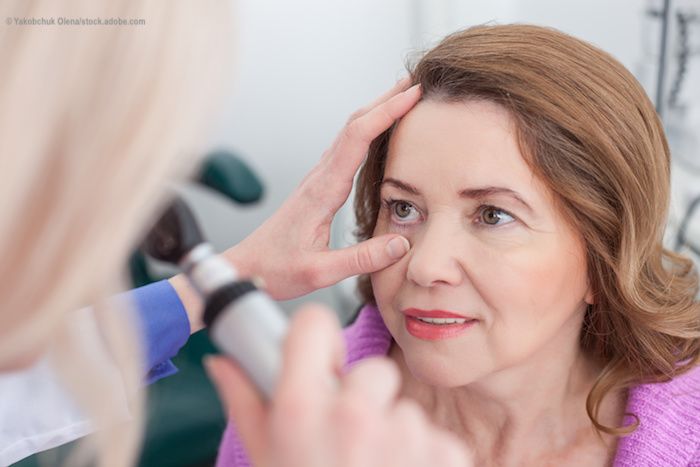Article
The detection, causes, consequences, and management of tear instability
Author(s):
Stephen C. Pflugfelder, MD, honored as the recipient of the Binkhorst Lecture and medal at ASCRS 2019, lectured on the quest for tear stability in dry eye patients.

Stephen C. Pflugfelder, MD, was honored as the recipient of the Binkhorst Lecture and medal at ASCRS 2019.
Introducing Dr. Pflugfelder at the ASCRS Opening General Session, Edward J. Holland, MD, remarked that most corneal specialists consider him to be the premier researcher in dry eye.
Dr. Pflugfelder is professor and James and Margaret Elkins chair, Department of Ophthalmology, Baylor College of Medicine, Houston, TX.
Accepting the award, Dr. Pflugfelder commented that it is validation of the tremendous interest in the tear film and dry eye and the work that he and his team and other researchers have been doing in the field.
Dr. Pflugfelder’s lecture was titled “The Quest for Tear Stability.” Referring to the title, he prefaced his talk by noting it is something that is shared by ophthalmologists on a daily basis.
In his talk, Dr. Pflugfelder set out to present evidence establishing several key points:
- Tear stability is maintained by the lacrimal functional unit
- Tear instability is a common feature of all types of tear dysfunction and a defining feature of dry eye
- Tear instability causes inflammation, increases blinking, degrades visual function, and stimulates corneal nociceptors
- There are increasing therapeutic options with different mechanisms of action to improve tear stability
“Tear instability is a sine qua non for tear dysfunction and included as a criteria in recent consensus definitions of dry eye,” he said. “A stable tear film protects and smooths the corneal surface, maintains comfort and quality vision during interblink intervals, and is a key determinant of a successful outcome in vision correction surgeries.”
Tear film anatomy and evaluation
Dr. Pflugfelder explained the tear film is a bilayer consisting of a hydrated mucin gel that is anchored to the underlying epithelium by the glycocalyx and covered by a polar and nonpolar lipid layer.
Although fluorescein tear breakup time (TBUT) remains the most common test and the gold standard for clinical detection of an unstable tear film, there is increased interest in noninvasive methods that offer several advantages.
“Fluorescein itself can affect tear stability. In addition, the noninvasive methods provide a digital record and may also identify or localize destabilizing cornea/ocular surface pathology, such as nodular degeneration or epithelial basement membrane dystrophy,” Dr. Pflugfelder said.
Etiologies of tear instability
Dr. Pflugfleder said that tear instability can be caused by a wide variety of ocular and systemic conditions that are encountered in daily life. The factors include decreased corneal sensitivity, systemic medications affecting tear production, cosmetic surgery, diet, environment, LASIK, eye drops and their preservatives, particularly benzalkonium chloride, and aging.
In terms of aging, Dr. Pflugfelder noted that conjunctivochalasis is a major cause of age-related tear instability, and he reviewed information showing its effect on TBUT and cases where conjunctivochalasis contributed to vision complaints.
Consequences of tear instability
Dr. Pflugfelder reviewed the pathways by which tear instability induces inflammation, increases blinking, affects visual function, and causes bothersome irritation and pain. Discussing its effect on blink rate, Dr. Pflugfelder discussed an interesting study that his group recently reported showing that normal suppression of blink while viewing a video display is lost in patients with certain types of tear dysfunction.
“The finding can explain the eye fatigue and irritation that so many office workers report at the end of the day,” said Dr. Pflugfelder.
Discussing the impact of tear instability on functional vision, Dr. Pflugfelder discussed studies showing its potential to degrade visual acuity, decrease low contrast visual acuity, and increase higher order aberrations with resulting retinal image degradation.
He discussed the mechanisms by which tear instability causes eye irritation and noted that it can be very relevant to the problem of postLASIK keratoneuralgia that may be encountered by refractive surgeons.
Restoring tear stability
Dr. Pflugfelder said it is important to try to identify the root cause(s) of tear instability, which would allow a targeted approach to intervention. He recommended modifying environmental triggers when possible, correcting lid and conjunctival abnormalities, and directing therapy to the deficient tear component(s).
Outlining an evidence-based approach for improving tear stability by targeting the deficient components, Dr. Pflugfelder listed meibomian gland thermoexpression, essential fatty acid supplements, doxycycline, azithromycin and lipid-containing artificial tears as therapies for improving the lipid layer.
Topical cyclosporine, retinoids, serum or plasma tears, punctal plugs, secretagogues, artificial tears, and nasal neurostimulation offer options for bolstering the hydrated mucin gel. Doxycycline, corticosteroids, and serum or plasma tears may improve health of the epithelium or the overlying glycocalyx.
“However, consider scleral lenses to protect vulnerable corneas if standard therapies are not adequate,” said Dr. Pflugfelder.
Newsletter
Don’t miss out—get Ophthalmology Times updates on the latest clinical advancements and expert interviews, straight to your inbox.




